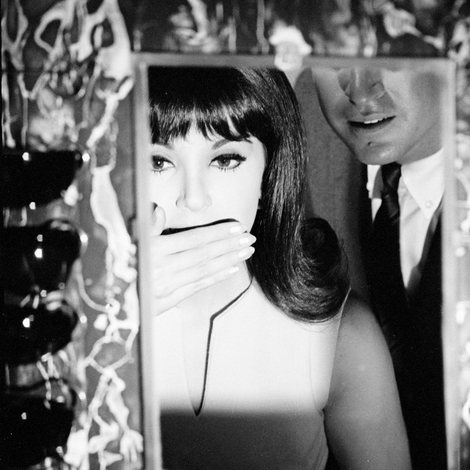All Along the Jenga Tower

It is not easy to get into the US National Toy Hall of Fame. The first time Leslie Scott heard rumors her invention had been nominated she knew her chances were slim. That time, she believes, she was up against the undisputed king of imaginative childhood play: the cardboard box. This time though, 15 years on and facing less fearsome competition, the creator of Jenga has been triumphant.
On Hollywood Boulevard, Britain is represented by the handprints of great actors from Dame Helen Mirren to Colin Firth. In the Rock & Roll Hall of Fame we have the Beatles. Now, in the Toy Hall of Fame, we have Jenga. The game, which involves 54 blocks in a tower, and a steady hand, joins chess, dominoes, the ball, marbles and Monopoly in being honored by the National Museum of Play in New York.
Ms Scott, 64, has spent a lifetime making games. Her latest, Ex Libris, is a test of literary skills. It is her first though, a test of dexterity, that has defined her life. She made the first Jenga as a toy for her younger brother while the family were living in Africa. “I was about 18, and we had all these offcuts from a sawmill, all over the place. They were intended for him as children’s building blocks. But they were roughly the same size.” With her two other siblings she devised a game to play with them, stacking them in layers and then gently teasing out a block. “It was just us mucking around.” But when she left home, she thought it was more than that. It took a while, and several years of dogged marketing, before the rest of the world came to appreciate the game as her family did.

One of the problems was finding a way to mass-produce it. “Those first blocks weren’t identical. And that’s actually sort of key to the game: they have to be randomly different.” If they are all the same, then you can’t find the loose one to wriggle out. So she had to find a way to mass produce randomness, “tumble polishing” the blocks in a barrel to make them slightly different.
Having done that, the next problem was to find someone who agreed this was a world-conquering game to rank in the annals of play alongside the ball, Lego and the cardboard box. Throughout the early 1980s she tried to sell it, managing to shift just a few thousand copies. Then a Canadian company got interested. The deal nearly fell through because they didn’t like the name. She insisted: it would be Jenga, Swahili for “to build”. Eventually, reluctantly, they conceded. They sold 40,000 and found that the name wasn’t an impediment after all. To date, more than 100 million have been sold, enough to build a Jenga tower to the top of Everest, 2,000 times over.
With her two siblings Leslie Scott devised a game to play with offcuts from a sawmill, stacking them in layers and then gently teasing out a block.
These days, Ms Scott lives near Oxford and concentrates on other games. But Jenga follows her wherever she goes. When she donated her royalties to pay for accommodation for scientists in a Kenyan research station, she discovered they had called it Jenga House. When she goes on holiday, she finds Jenga fans in every country. “It’s really strange to be known for something I did when I was a teenager. I think of it as part of my life, but at the same time, it’s out there. There’s moments … we were in Argentina recently. Finding out Jenga is huge there was incredibly surprising to me.” She was there visiting her husband’s cousin. “When he told people I was the inventor of Jenga, they would literally stop and stare. He was telling waiters in restaurants, it all got very embarrassing.” She eventually asked him to stop when he told a taxi driver, who took his hands off the steering wheel in shock. “It was very dangerous.”
As her 54 blocks gain not merely the temporary fame of Buenos Aires taxi drivers, but the immortality of the Toy Hall of Fame, it has given Ms Scott time to reflect on what it was that made her invention, almost 50 years ago, so special. Why was it that so many people wanted to pull out those blocks until the tower tumbled? She has an idea: it’s the tumbling. “One of the lasting appeals of the game is that you actually can’t beat it. You can’t win. Gravity is always going to win.”
Joy Ride

Need for Speed

Ask a youngster how they have spent their time off over the past three years, and the answer might be watching television, hanging out with friends and sleeping. But Nathan Tozer, a maths undergraduate, is not your average 20-year-old. Over the past three years he has spent 851 hours, 50 minutes and 39 seconds completing 58 jigsaw puzzles with a total of 89,929 pieces. In the process he has become an online star.
Filmed at the dining-room table in his parents’ house in Bristol, where he lives, Tozer shares his love of the pastime on social media, attracting more than 300,000 followers. From Thailand to Brazil, fans on Instagram and TikTok watch him do his puzzles, but not in real time — the films are speeded up.

He is so feted by jigsaw-lovers — or dissectologists — that businesses ask him to post videos of himself completing their puzzles, paying him up to $650 a time. Tozer says his popularity is “bonkers”, adding, “I don’t know why it has gone so big. I am doing a jigsaw because I’m doing a jigsaw — but there is clearly something about it that people like.”
He took up the hobby three years ago after his parents gave him a puzzle based on a map of the London Underground to take his mind off exam stress. “My first reaction was a little bit sceptical,” Tozer said. “Puzzles certainly used to be associated with older people. I was 17 at the time. But I gave it a go and got hooked.”
He started filming himself doing jigsaws on Instagram about 14 months ago, and his following began to build. But when lockdown started in March, interest surged. Some of his friends only found out about his passion online. Tozer said: “I’ve never been someone who is outgoing, drinking or going to nightclubs. That’s just not me. I didn’t really tell many people [about the puzzles]. The first word when I told my friends was surprise.”
One of his most challenging puzzles was a picture of New York in which about 1,000 pieces were blue sky. It took 56 hours and 19 minutes to complete, and attracted more than 10 million views on TikTok. Tozer allocates three hours, three times a week, to his hobby. For Christmas, he has asked his parents for a 40,000-piece puzzle of Mickey Mouse.

